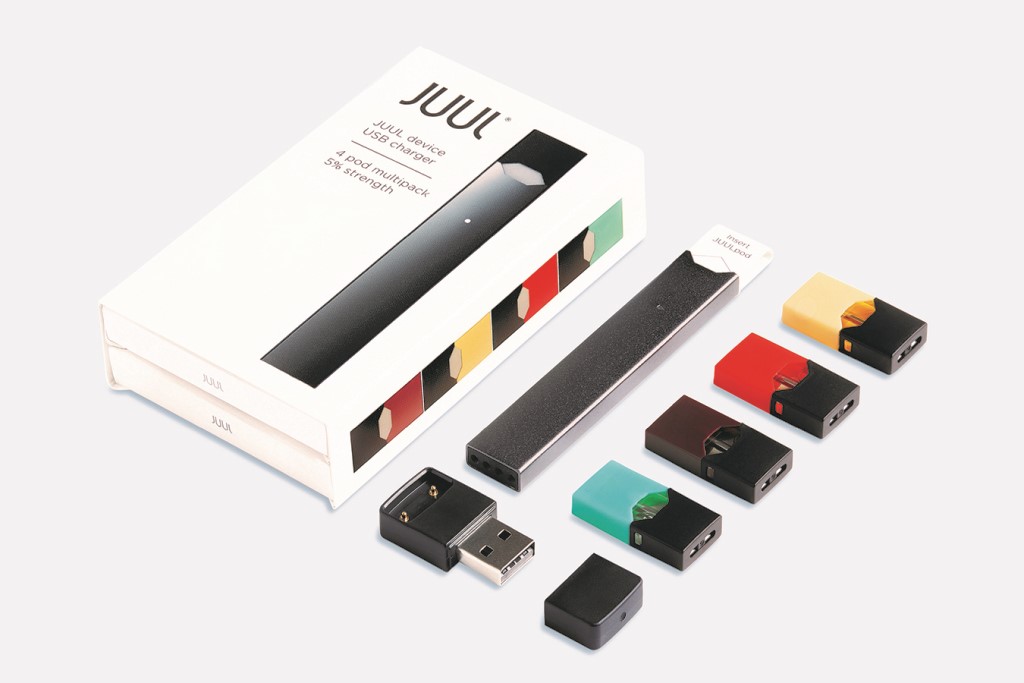On the heels of news that 2 million middle and high school students nationwide used e-cigarettes in 2017, the U.S. Food and Drug Administration recently announced a crackdown on the sale and marketing of the devices to kids. Public health officials say e-cigarette use among youths has hit epidemic proportions, and schools are a prevalent setting for the devices.
One brand, Juul Labs, presents a major challenge for teachers and administrators because one of its most popular products resembles a USB stick. The pods are also available in flavors attractive to students, including mango, mint and crème brulee.
To assist board members in taking on the issue, CSBA has developed two sample policies that address e-cigarettes, both of which are available on Gamut Online:
- Sample Board Policy 3513.3 Tobacco-Free Schools reflects legal requirements that California districts prohibit the use of tobacco and nicotine products anytime, anywhere in district-owned or leased buildings, on school or district property, and in district vehicles. These requirements are in Health and Safety Code 104420 and 104559. Health and Safety Code 104420 and 104559 define products containing tobacco and nicotine as including smokeless tobacco, snuff, chew, clove cigarettes, and electronic cigarettes that can deliver nicotine and non-nicotine vaporized solutions. Thus, all districts should adopt policy that prohibits e-cigarettes. The policy and the administrative regulation that accompanies it also address notifications of students, parents and others regarding the prohibition as well as enforcement and discipline for any violations.
- Sample Board Policy 5131.62 Tobacco deals more with providing prevention and intervention services for students but also includes the prohibition against tobacco on campus, including e-cigarettes.
To additionally help board members, administrators and educators better understand and tackle the trouble of vaping and e-cigarettes, Michelle Cannon, partner at Lozano Smith, provided the CSBA with a helpful article used as a client news brief:
Vanquishing ‘Vaping’ on Campus
By Michelle L. Cannon and Alyssa R. Bivins, Lozano Smith
School administrators are facing a growing threat to student health that is often disguised as a standard school tool. Juuls are a type of vaporizing device — commonly referred to as “vapes”—that is soaring in popularity among young people.
The use of vapes, Juuls and similar products is extremely prevalent among high school students, creating a new generation of nicotine users and “smokers” after years of successful programs aimed at reducing teen smoking. Every day in high schools across the United States, the use of electronic cigarettes is common and occurs on school grounds undetected by school staff.
Vapes and electronic cigarettes have become increasingly discreet and available in an array of enticing flavors. Some vapes now resemble regular pens, making them more difficult for teachers and administrators to notice and confiscate. The Juul resembles a USB stick, and its small size allows it to fit into the palm of a hand.
Tobacco products have been banned from school campuses for decades, but some vapes can use flavored vapor without nicotine or tobacco. These devices can also be used for the ingestion of marijuana and related substances.
Devices used for these purposes are often called “wax pens” or “dab pens” and are also small and easily pass undetected. Can schools ban these devices or discipline students for using them on campus? The answer to both of these questions is “yes.”
Applicable laws
As e-cigarette and vaping technologies have developed, this industry has fortunately not left the law in a cloud of smoke. California’s laws have been broadened to ban Juuls and every other type of vaporizing device from schools. California Health and Safety Code section 104420, subdivision (n) was amended in 2016 to require any school receiving state funding to have a policy that prohibits “electronic cigarettes that can deliver nicotine and non-nicotine vaporized solutions.” Thus, even e-cigarettes or vapes that contain only flavored vape are prohibited from school grounds.
Education Code section 48901 was also amended in 2016, to prohibit smoking and tobacco products on campus and at school events. It defines “smoking” and “tobacco products” as they are defined in Business and Professions Code section 22950.5. The latter code section’s definition of “smoking” includes “the use of an electronic smoking device that creates an aerosol or vapor, in any manner or in any form,” while its definition of “tobacco product” includes “[a]nelectronic device that delivers nicotine or other vaporized liquids.”
Yes, districts can discipline
As discussed above, vapes and e-cigarettes — even those containing only flavored vapor — are banned from school campuses and school events to the same extent as tobacco products. Under existing California law, school districts can discipline students in possession of non-nicotine vapes or e-cigarettes in the same way they discipline students using or in possession of cigarettes.
What should we do?
There are a few, key things schools and school districts can do to fight the use of vapes and e-cigarettes on campus and also the health threat they pose to students.
- Revise board policies to specifically prohibit vaping and related devices.
- Develop programs to educate students on the dangers of vapes and Juuls.
- Train staff to recognize the use of vapes and Juuls at school.
- Provide information and communication to parents about these devices and their prohibition at school.





